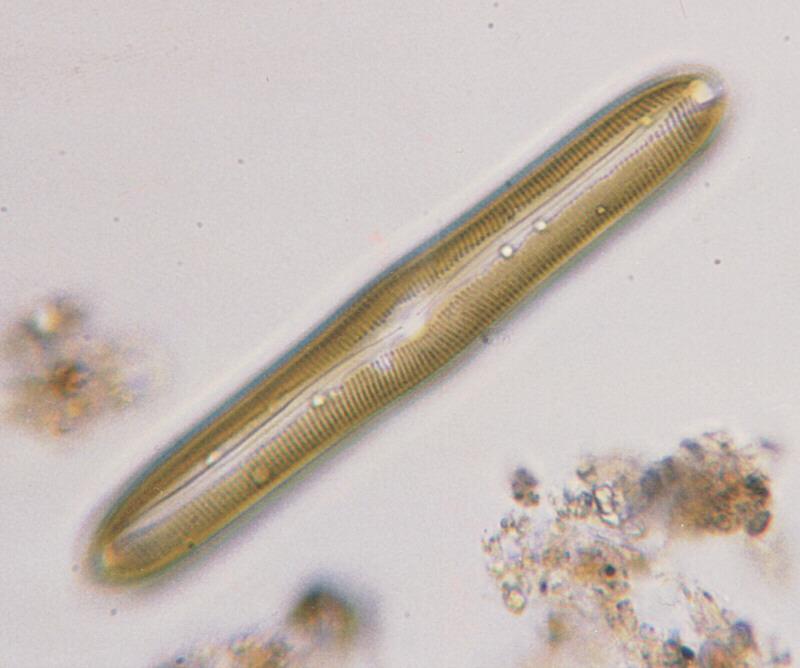|
| Query: Protozoa | Result: 7th of 36 | |
Protozoa - new scans, #2 - a hungry ciliate and its meal
| Subject: | Protozoa - new scans, #2 - a hungry ciliate and its meal
| | Poster: | Schmode (schmode@vossnet.de)
| |

| File size : 48872 bytes
File date : 2001:02:21 16:31:57
Resolution: 800x668
Jpeg process : Baseline
Posted Newsgroups: alt.binaries.pictures.animals
Posted Date: Sat, 08 Aug 1998 23:02:05 +0200 |
Protozoa - new scans, #2 - a hungry ciliate and its meal
Hello again,
sorry - this posting gets a little hard-disk expensive.
If you watch the first pic you'll recognize the typical appearance of a
member of the ciliate family. I don't know precisely which one because
there are no distinctive details such as location and form of the cilia,
of the vacuoles and the nucleus. This picture just shows three details:
The nucleus, a cut in the lower middle of the organism which is likely
to be the mouth, and a green barrel of substantial size all over the
organism.
This is what makes this shot a little special. The green barrel is a
diatomea, an alga covered with a solid coat of silicic acid. This one is
called Pinnularia; it is one of the biggest diatomeae that exist,
reaching about 1/50 of an inch in length - just as the ciliate pictured
here. The second shot shows a Pinnularia just to give you an impression
of what is happening here. The jagged shell of Pinnularia is clearly
visible; the little spheres in its cytoplasma, by the way, are oil drops
produced by the organism which enable it to not only search the water
depth being optimal for photosynthesis but - believe it or not - perform
active horizontal movement on solid ground by creeping on an oil track
like a snail. If you see an oil film on a still water in late spring it
is very likely to be produced by diatomeae rather than by pollution.
Diatomeae just have one weak spot. Having to go to cell duplication in
order to reproduce, the shell consists of two halves which can be
separated from each other like a cardboard cheese box. The gap between
the two halves makes the organism vulnerable, the cytoplasma being
accessible to digestive enzymes of hungry ciliates. So Pinnularia,
inrespective of its size and shell, has just been had for dinner by the
ciliate. Food items of that size are very rarely taken by ciliates who
usually prefer bacteria, smaller Protozoa and small algae. If you watch
the shot you will see no fellow organisms around the ciliate indicating
that the water is comparatively clean; the gulping of Pinnularia may
just have been a desperate attempt to make a living in a situation of
food shortage. In fact, the cleaner the water is, the more unlikely it
is to find ciliates there; the best sources for ciliates are usually the
biological degradation stages of sewage water treatment plants. Having
no access to that, I prefer to go hunting Protozoa in small ponds and
ditches located in agriculturally used greenlands; the water there is
usually well fertilized providing excellent conditions for Protozoa
life.
More of it to come soon.
Take care,
Ralf
name="Ciliateeat.jpg"
name="Pinnularia.jpg" |
^o^
Animal Pictures Archive for smart phones
^o^
|
|

